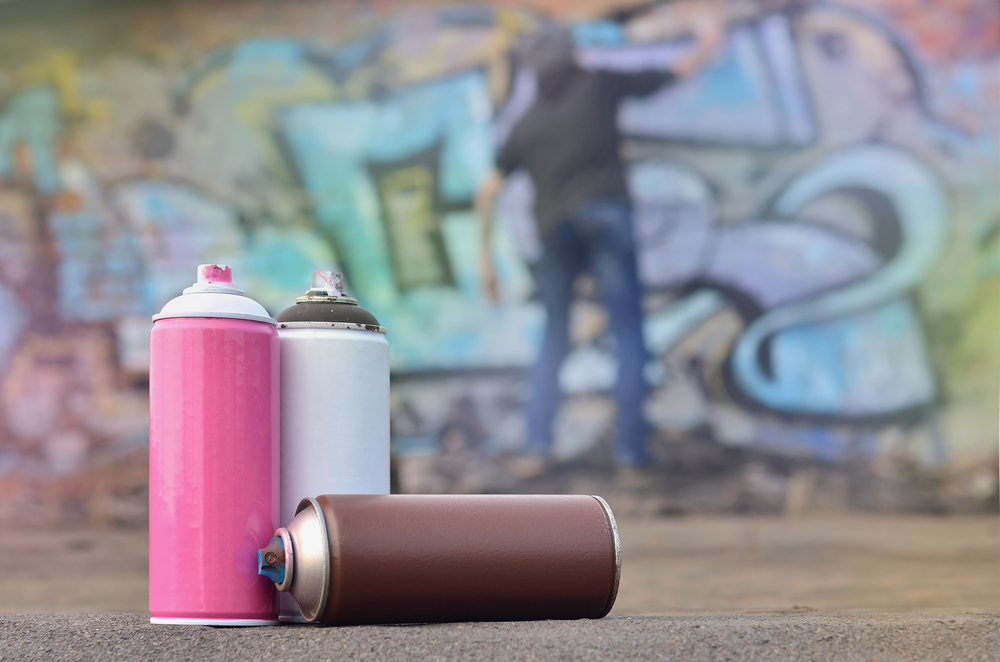Share This Article
ArrayBy Sahar Adatia and Jimmy Singh.
Graffiti vandalism, or the act of marking other people’s property with writing, symbols or graphics without their consent, is an ever-present problem in urban areas and one that frequently causes widespread concern amongst Australian communities.
Graffiti vandalism is an illegal act and its ramifications upon society are vast. These include not only the financial costs to local government and property owners but also the detrimental impact on community perceptions of safety and public amenity.
Earlier this year, the implications of such graffiti vandalism were brought to light when 22 businesses in Adelaide woke up to graffiti sprayed all over their buildings following a splurge of tagging that occurred in the space of one night.
On 23 February 2019, an Adelaide man was allegedly caught on CCTV graffitiing the businesses in the CBD.
The 40-year-old man’s alleged tagging spree, which spanned Rundle St and Union St, carried on well into the early hours of the morning.
The Walkerville man was eventually located by police in Rundle St allegedly vandalising a building just after 3:30am, following which he was arrested.
He was charged with marking graffiti, carrying graffiti implements and property damage.
Anger in Adelaide CBD Following Graffiti Tagger’s Vandalism
In the wake of the series of graffiti attacks, business owners in the CBD were left both angered and puzzled.
Speaking to The Advertiser, owner of Jekyll and Hyder, Steve Tsimopoulos, said it was a “senseless crime”.
“There is no benefit to anybody,” he said.
“It is just a headache and all the buildings around here are heritage listed so there is going to be a big and expensive job to try and clean it up.”
Mr Tsimopoulos was also left baffled by the attacker’s age.
“I can’t believe a person of that age can go around doing that sort of stuff, you might expect a 15-year-old doing this but a 40-year-old seriously?
“He should be asleep at that time.”
The Costs of Graffiti Vandalism to the Community at Large
While most people aren’t aware of the ramifications of graffiti vandalism upon society, its occurrence palpably conflicts with many groups community-wide. These include state and territory governments, local government, police, public transport providers and young people.
The Keep Australia Beautiful organisation advises that in NSW alone, graffiti vandalism costs local government and property owners more than $300 million each year.
In fact, in the five-year period from 2009 to 2014, a total of 46, 404 incidents of graffiti were reported to NSW Police, with an average number of incidents of 9,280 per year.
The ramifications of graffiti vandalism don’t end there however.
The negative impacts go beyond the financial costs, with research suggesting that graffiti can also deter community perceptions of safety and public amenity.
Worryingly, as the Australian Institute of Criminology highlights, graffiti vandalism is not limited to its offenders either.
The illegal act is most commonly conducted by males aged between 12-25 years and peaking at the ages of 15 and 16. Furthermore, it is equally committed by those across all social backgrounds and is not exclusive to lower socio-economic classes.
Tackling the Problem of Graffiti Vandalism
Graffiti is only illegal if it is done without the permission of the owner, and the place that is marked isn’t a legal graffiti space.
Nonetheless, graffiti is a persistent problem in urban areas and it is equally a complex phenomenon. Significantly, this is because there are various types of graffiti, each with its distinguishable profile and all of which are in prolific production.
The NSW Parliamentary Research Service highlights that given its existence is entrenched in society, in the path to tackling the problem, government initiatives tend to focus on controlling the problem rather than eradicating it.
If you intentionally damage a space by marking it without the permission of the owner, you can be charged with a criminal offence.
What are the Penalties for Graffiti Vandalism in NSW?
The Graffiti Control Act 2008 (NSW) is specifically aimed at getting rid of the extent of graffiti, in addition to deterring people from doing this on public properties.
Pursuant to section 4 Graffiti Control Act 2008 (NSW), anyone guilty of marking premises or property in breach of section 4 will face a maximum penalty of up to 12-months imprisonment or $2,200 fine.
A Magistrate is not allowed to impose an imprisonment penalty unless the offender has a previous conviction for this offence on so many occasions that the Magistrate forms a view that the offender is a serious and persistent offender who is likely to re-offend.
A person can only be found guilty of this offence if he/she:
- Intentionally marks a premises or other property; and
- Did this without consent from either the occupier or person in charge of the premises, or without the consent from the owner or person in charge of the premises or property if the premises or property was not occupied; and
- Did this without reasonable excuse; and
- Did this in ‘circumstances of aggravation’.
‘Circumstances of aggravation’ is when a person intentionally marks the property or premises with a graffiti implement or in a manner that the mark isn’t readily removable by wiping or by using water or detergent.
A ‘graffiti implement’ includes a spray paint, marker pen or an implement designed or changed to produce a mark that isn’t readily removable by wiping or by use of water or detergent. (section 3 Graffiti Control Act 2008 (NSW).
A person charged with this will be found not guilty in court if any of the defences apply to this charge. Some defences to this charge include where the accused person does this out of necessity or duress, or where he/she does this involuntarily, or due to the state of intoxication- he/she does this without an intention to actually mark the premises or property.
Further, anyone who has a graffiti implement in his/her possession where he/she has the intention to use it to commit the offence of section 4 outlined earlier will face up to 6-months imprisonment or $1,100 fine (section 5 Graffiti Control Act 2008 (NSW)).
The offence of damaging property recklessly or intentionally can also be applied against someone who commits a graffiti vandalism offence, carrying a maximum penalty of up to 5-years imprisonment under section 195(1) Crimes Act 1900 (NSW).
Considered as amongst Sydney’s best criminal defence lawyers with offices in 8 locations, including Penrith, Parramatta and Wollongong, we are available 24/7.
Book a Lawyer Online
Make a booking to arrange a free consult today.
Call For Free Consultation
Call Now to Speak To a Criminal Defence Lawyer
Over 40 Years Combined Experience
Proven SuccessAustralia-Wide
Experienced LawyerGuarantee
 (02) 8606 2218
(02) 8606 2218
 (02) 8606 2218
(02) 8606 2218














